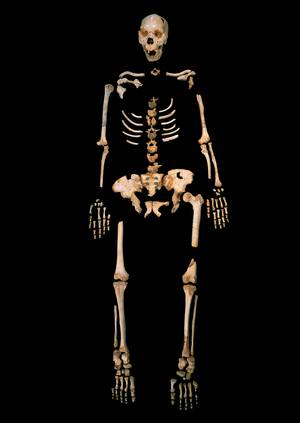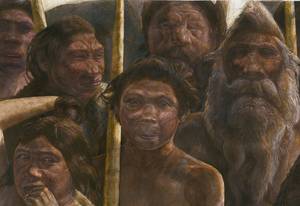Unexpected consequences in Atapuerca, analyzing the oldest DNA so far

The article explains that Osín de los Huesos is the richest place in the world in the hominid fossils of the middle Pleistocene. In fact, it preserves the bones of 28 individuals at least 300,000 years ago. They are similar to fossils called Homo heildelbergensis, but they also have clear Neanderthal characteristics. Now, the researchers have been able to know much better these hominids, since they have managed to sequence their DNA. This is a significant advance, since all the old DNA recovered and sequenced so far belonged to the superior Pleistocene.

Before sequencing the DNA of the human fossil of the Osin of the bones, it was sequenced that of a bear of the cave that was fossilized in the same time and place (Ursus deringeri), using on this occasion a methodology and technology refined in that study. Thus, the researchers considered “remarkable” the Osín Óseo, which has given “extraordinary evidence of the long-term duration of DNA.”
To obtain DNA, they left a femur. holes in three areas of the femur and extraction of several samples (1.95 g total). They managed to isolate mitochondrial DNA and, given the similarity with the mitochondrial DNA of denisov, they complemented the sequences with it. In particular, they formed three sequences that contrasted with the mitochondrial DNA of other species: that of the current human beings (Asians and Europeans on the one hand, and Africans on the other), the Neanderthal, the Denisovés, the chimpanzees and the Bonoboe on the other. With all of them, therefore, a phylogenetic tree was constructed and it was calculated when the mitochondrial DNA of the Osin of the Bones and the denisoveses were separated. According to the article, between 0.4 and 1.06 million years ago, “probably about 700,000 years ago,” researchers have determined.
Fortuitous kinship
In his opinion, “it is not believed” that the man analyzed and the denisoveses share the same ancestor, instead of with the Neanderthals, since the fossils of the Osin of the Bones resemble the Neanderthals, “for example, in the morphology of the teeth, the matricer, the center of the face, the bone on the eyes and the occipital”. The morphology of the Denisov, on the other hand, has been recognized as little known, since almost all its information has been obtained from the DNA extracted from a phalange of about 40.000 years ago, but they have remembered that, besides the phalanx, there is a yew that says that “the yew is very large and that the crown does not have the decrease or decrease that have the most hominid of Oshomine”.
Therefore, despite the fact that, according to a first hypothesis, the human being of the Osin of the Bones would be a relative close to the denisoveses, the researchers have not given credibility to this hypothesis. Otherwise, it would mean that denisoveses lived with Neanderthals in western Europe, and it would not be easy to explain how they were subsequently divided into two genetically different groups.
Discarding this hypothesis, three other alternatives are proposed. For example, the man of the Osin of the bones has no relation with the Neanderthals or with the Denisoveses. But they have also ruled out because mitochondrial DNA says otherwise.
In another hypothesis, the neighbor of Osin would be closely related to the ancestor of both. Because of his age and morphology, the researchers consider him credible, but he would not explain why in mitochondrial DNA Neanderthal and denisovous differ. And in the fourth hypothesis, they have proposed that another group of hominids have brought to Atapuerca a mitochondrial DNA similar to denisoveses.
Hypothesis, according to the researchers, the individual analyzed in the Osín de los Huesos is so old, “probably prior to the separation between denisoveses and neanderthals”.
In short, the researchers have recalled that, based on fossils, there seems to be more than one evolutionary line in the Middle Pleistocene, but the genetic data that exists are still not enough to make definitive claims. Consequently. The researchers hope that as the sequencing advances, knowledge about the human groups of the time will grow.
In any case, according to archaeologist Joseba Ríos Garaizar, the work carried out by the researchers of Max Planck and Atapuerca is “remarkable”, on the one hand, because “it is a great step” to be able to analyze the mitochondrial DNA so old, and on the other, because it shows that the demography of the medium Pleistocene, the evolution, the movements of the human groups and the most difficult scenario of the
Buletina
Bidali zure helbide elektronikoa eta jaso asteroko buletina zure sarrera-ontzian












